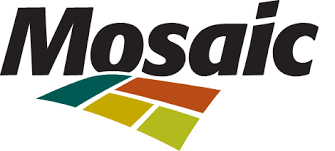NIO faces risks like competition, regulatory changes, and internal challenges in finance, supply chain, and tech. Effective risk management is crucial to sustaining its long-term growth.
While NIO, Inc. (NYSE: NIO) has experienced impressive growth, the company also faces several risks that could impact its future performance. These risks are a mix of internal and external factors, including market conditions, competition, and regulatory challenges. Key risks include:
1. Intense Competition in the EV Market
The global electric vehicle market is highly competitive, with established players like Tesla, traditional automakers transitioning to EVs, and other Chinese EV startups. NIO faces pressure to maintain its market share and differentiate itself in a crowded field. This competition could lead to pricing pressure, thinner margins, and the need for significant marketing and innovation spending to stay ahead.
2. Dependence on the Chinese Market
Although NIO is expanding internationally, China remains its largest and most important market. This heavy reliance on China exposes the company to risks related to the Chinese economy, consumer demand, and government policies. Any slowdown in domestic EV demand or adverse economic conditions in China, such as rising interest rates, could hurt NIO's sales and overall financial health.
3. Supply Chain Disruptions
The EV industry relies on complex supply chains, particularly for key components like batteries, semiconductors, and electronics. NIO, like other automakers, is vulnerable to disruptions in these supply chains. Shortages of critical materials, delays in production, or reliance on suppliers for advanced technology could limit NIO’s ability to scale production and meet delivery targets.
4. Regulatory and Trade Risks
NIO faces regulatory risks both domestically and abroad. In China, the government could adjust its EV subsidies or implement regulations that affect NIO’s operations. Internationally, NIO may face trade barriers, tariffs, or geopolitical tensions, especially in markets like the U.S. and Europe. The imposition of protectionist tariffs or stricter regulations in foreign markets could limit NIO’s ability to expand globally and increase costs.
5. Financial Sustainability and Profitability
Although NIO has shown improving financial performance, it remains unprofitable, and sustaining long-term profitability is a challenge. The company continues to invest heavily in R&D, expansion, and marketing. These high costs, combined with pressure to scale rapidly, pose risks to NIO's financial health. Any inability to achieve sustainable margins or control operational costs could result in greater losses or financial instability.
6. Technology and Innovation Risks
The EV industry is fast-evolving, with continuous advancements in battery technology, autonomous driving, and smart vehicle systems. NIO must consistently innovate to stay competitive. Falling behind in technological development, especially in areas like battery efficiency or autonomous driving, could erode its competitive advantage. Additionally, any failure in software systems, autonomous driving features, or vehicle safety could lead to product recalls, reputational damage, and legal liabilities.
7. Market Volatility and Stock Performance
NIO’s stock price has experienced significant volatility, driven by market sentiment, investor speculation, and broader trends in the EV sector. A 61% decline in stock price over the last 12 months shows that investors remain cautious about the company's outlook. Continued stock price volatility can make it harder for NIO to raise capital, especially if its financial performance does not meet market expectations or if broader market conditions worsen.
8. Dependence on Government Subsidies and Incentives
NIO benefits from government subsidies and incentives, particularly in China, where EV subsidies reduce the cost of electric vehicles. However, these subsidies are subject to change and may be reduced or eliminated in the future. A reduction in government support could lead to higher prices for consumers, potentially slowing demand and affecting NIO’s growth trajectory.
9. Battery Supply and Cost Issues
NIO’s reliance on battery technology poses both operational and financial risks. Batteries account for a significant portion of EV costs, and fluctuations in raw material prices (such as lithium, cobalt, and nickel) could lead to higher production costs. Moreover, competition for battery supplies could create bottlenecks or cost increases, limiting NIO's ability to produce vehicles at scale.
10. Currency Exchange Risks
As NIO expands globally and conducts business in multiple currencies, it is exposed to exchange rate fluctuations. Currency volatility, particularly between the Chinese yuan and the U.S. dollar or euro, could impact the company's revenue and profitability. Any unfavorable exchange rate movements could increase operational costs or reduce the value of international sales.
11. Economic and Policy Risks in Key Markets
Global economic downturns, such as rising inflation, higher interest rates, or recessions, could reduce consumer spending, particularly on premium products like NIO’s vehicles. Additionally, changes in environmental policies, both in China and internationally, could impact the demand for EVs. Stricter emissions regulations could benefit NIO, but changes that ease regulations might reduce the incentives for consumers to switch to EVs.
12. Reputational and Brand Risks
As a premium EV brand, NIO’s reputation is key to its success. Any issues related to vehicle quality, safety concerns, or poor customer service could damage NIO’s brand image and erode consumer trust. Negative publicity, whether due to product failures or regulatory issues, could hurt sales and lead to long-term brand damage.
Independent Analysis & No Investment Advice EstimatedStocks AB is an independent financial research platform. This publication is ...
Author
The Editorial Team at estimatedstocks.com is a dedicated group of financial market analysts, researchers, and writers committed to providing accurate, timely, and insightful content for investors and financial enthusiasts. With a deep understanding of global markets, macroeconomic trends, and investment strategies, the team at estimatedstocks.com ensures that readers are well-informed to make smart financial decisions. Our editorial team specializes in analyzing stock performance, market trends, and economic indicators, offering expert commentary and in-depth reports on the ever-evolving world of finance. We aim to bridge the gap between complex financial data and practical investment insights, making the markets accessible to everyone—from seasoned investors to those just starting their financial journey. At estimatedstocks.com, our content is driven by thorough research, critical analysis, and a commitment to delivering objective, fact-based reports. Whether it’s stock market forecasts, company earnings reviews, or sector-specific deep dives, the Editorial Team is focused on helping our audience navigate the financial landscape with confidence. Our mission is to empower investors by providing them with the tools and knowledge to make informed decisions in an unpredictable market.


